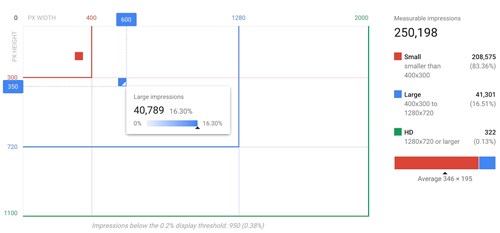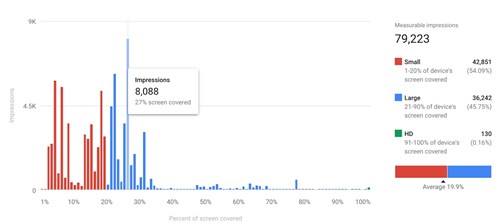Good Point
How to achieve high-quality advertising with real time bidding

04. 10. 2022 | Leoš Mrázek
Banners, videos, displays… setting up advertising for visibility and achieving something is not a simple matter. Leoš Mrázek, our digital marketing specialist, found a moment to write down the basics of potential approaches and showed how we do it at Heureka, so read on. Maybe even a robot apocalypse is on the way!
The world of banner and video advertising has changed dramatically since its beginnings in 1994. Back then, users were so dazzled with internet advertising that an incredible 44% of users who saw it clicked on the first ever banner.1 These days, getting this kind of result is close to impossible. Most users today hardly ever click on acquisition banners and brand campaigns. Advertisers instead attract users with appropriately selected creative solutions, and most importantly, correctly selected placement. They do this particularly to increase awareness and consideration of the relevant product or the entire brand.
I see that I see nothing: banner advertising
Everyone probably suspects that not all banners purchased by advertisers are visible. While some advertising positions jump out at you ay every turn, others you hardly ever encounter. In recent years, an important trend has been optimisation for the viewable impressions rate. Advertisers (in many cases agencies) try to achieve, for example, a minimum viewable impressions rate of 90% and subsequently guarantee this rate in media plans to their clients.
However, this type of approach often intensifies the auction pressure on positions with a high rate of viewable impressions and disproportionally increases the purchase price.
At Heureka, we instead decided to optimise our campaigns for viewable CPM (cost per thousand viewable impressions). We also bid on positions with a lower anticipated viewable impressions rate but with much cheaper CPM. We are therefore able to purchase more viewable impressions.
Another metric we monitor in our campaigns is average ad display time. When the display time on screen increases, so does the user’s awareness and consideration of the advertised product.2 Using the DV3603 system, we are able to determine the average display time and subsequently exclude from the campaign those combinations of URL, device and banner size that reduce the overall time spent with the campaign’s ad.
Camera, action: video advertising
As the heading suggests, the main requirement of this format is for the user to see and hear the ad, and if possible, watch it to the end. In recent years, however, various practices to increase the number of impressions sold have appeared. For example, shrinking a video on desktop devices, placing it in a corner, or muting the video. Nothing interrupts users from continuing to consume the content of the website.
What is the problem here? The advertiser pays the full price to display its ad, but nobody actually watches it. Logically then, videos displayed in this manner have high view counts and give the impression that the ad will attract more potential customers to the relevant website. A common result? Budgets are shifted to these areas to get a cheaper cost per view.
At Heureka, we purchase only those video displays that can be seen, heard and receive the user’s full attention. We use the Google Campaign Manager verification module for evaluation and to detect URL addresses where these phenomena occur and actively exclude them from campaigns.

More than 80% viewed on small video players (on desktop devices).

In this case, we purchased 54% of the impressions on small video players (on mobile devices).

We are able to identify the details of the size of video players, including activated sound, at the level of individual URLs.

Proportion of small video players on various device types.
Source: Inventory availability report, July 2022, Czech Republic.
Hasta la vista, baby: robotic impressions
Besides actual users, “bots” are also active on the internet. These are automated scripts that serve many purposes, from scraping content to checking and ensuring site functionality to browsing and retrieving keywords from websites for internet search engines.
The mere existence of “bots” is not a problem. The problem arises when a bot is used to mimic human behaviour – mouse movement, displaying and clicking on ads, downloading newsletters and generating false leads to advertisers’ websites. Some website owners might use them to artificially increase their traffic and consequently their income from advertising. In addition to the fact that the “bot” does not purchase your product and is not interested in your brand, it also distorts the statistics of advertising systems and web analytics.

We therefore do not use any IAS or DoubleVerify systems at Heureka. Instead, we actively work with independent researcher Dr. Augustin Fou, and with the help of the Fou Analytics platform, we analyse the data from all our banner impressions. In this way, we can detect and exclude domains with a high rate of robotic traffic and get to the bottom of practices such as stacked ads, pop-under ads, etc. We can also check the DSP’s ability to target geolocation, the set frequency of campaigns and viewable impressions rate in a similar manner.

Example from the FouAnalytics interface.
Conclusion
Ad impressions with very low or very high quality can also be purchased on the internet. Our job is to detect these differences and purchase only those positions where we see real benefit at the best possible price.
Leoš Mrázek
Display Marketing Specialist

Sources:
3) DV360 is a demand side platform included in the Google Marketing platform.